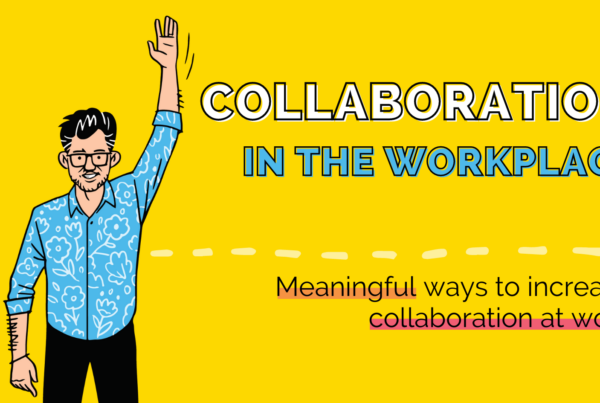
One of the best bits of advice I ever got was to have a “to-do” list … and also, a “not-to-do” list. The best outcome is always a combination of most of what you want and almost nothing of what you don’t want. Or to put it another way, it’s not just what you add, it’s what you subtract.
So let’s paint a picture of a not-so-great leader. They might have good intentions, but they constantly stumble into common pitfalls.
First off, they can’t resist giving unsolicited and premature advice, jumping in before it’s even needed. They assume that the way they “add value” is to have all the opinions and ideas.
Second, they focus on coaching employees for performance – get the work done – but spend no time helping the people they lead learn and grow.
They also struggle to say no, taking on too much and ending up overwhelmed. At the same time, their people feel frustrated and stifled, afraid to make decisions without approval. Innovation suffers, employee engagement declines, and resignations are on the rise.
They might be a perfectly decent person. But they’re not a great leader.
But here’s the good news – becoming a great leader isn’t an inherent trait; it’s something that anybody can learn.
Here’s how to do it in 8 easy steps:
1. Stay Curious a Little Longer
As a great leader, one of your key responsibilities is to breathe life into your team’s goals and processes.
This means honing in on the work that truly matters and unleashing the full potential of your team to achieve it. Curiosity is an absolute game-changer in this pursuit—an underutilized superpower that a lot of leaders undervalue.
The benefits of staying curious a little longer are immense, spanning personal growth, organizational success, and competitive advantage.
This is because embracing curiosity empowers your team members to tap into their own wisdom and find their solutions. It helps them become more self-assured, competent, and self-reliant.
But there’s a juicy bonus for you as well. By nurturing curiosity in your team, you’ll find yourself escaping the constant firefighting mode.
Instead of solving endless problems, your team members will view challenges as opportunities to learn and grow. This builds organizational resilience and enhances everyone’s ability to navigate tough times with ease.
To harness the power of curiosity, start asking powerful questions like, “What’s the real challenge here for you?” This question serves a dual purpose—strategically uncovering organizational challenges while fostering individual growth and self-discovery.
The Greatest Answers Come From the Greatest Questions
Become a better leader. Better teacher. Better person.
Learn how to ask the right questions the right way with this free download.
Eight Ways to Ask a Question Well
2. Build Your Questions Repertoire
In The Coaching Habit, I introduce the seven essential questions that can transform your leadership effectiveness. To help you embrace curiosity on a daily basis, try incorporating three or four of these questions into your repertoire.
“What’s on your mind?” or “What do you want?” will help you tap into the realm of coaching for development—an approach that fuels innovation and growth within your organization.
But there’s more to asking questions than meets the eye. You need to master the art of powerful questioning. Stop the long lead-ins and ask the question. Stop asking 17 questions in a rat-a-tat drive-by-questioning-incident, and ask one question at a time.
Instead, focus on asking a question and then truly listen to the other person’s answer.
When you allow others the space to answer your questions without rushing or interrupting, it’s incredible what insights will emerge. Another tip is to be fully present when you engage with someone, showing genuine interest in what they have to say.
Give them the gift of your best, and they’ll give you the gift of theirs.
3. Tame Your Advice Monster
You’ve got your questions, and you’re raring and ready to embrace curiosity. There’s just one problem. Your advice monster. You know, that little voice inside that just can’t resist giving advice even when you don’t have all the information.
Someone starts telling you about something, and within seconds, your advice monster is sabotaging the conversation, desperate to share its wisdom. If this rings true, you can find strategies to start taming that monster in my book, The Advice Trap.
Now, you might be thinking, “Sure, other people’s advice monsters can be annoying, but my advice is genuinely helpful!” And you know what? There’s nothing wrong with giving advice. It’s an essential part of our civilization. The issue arises when giving advice becomes our default response.
Here’s the thing. Your advice is rarely as good as you think it is. More than that, if someone is constantly on the receiving end of advice, with no option to share their own ideas, their autonomy and mastery decline, and most likely their purpose too.
Being told what to do—even with the best of intentions—signals that the advice-receiver is not really here for their ability to think but only for their ability to implement your ideas. They certainly do not feel encouraged to bring their best self to work, to bring their creativity and commitment, and competency, to assume leadership and try something new.
By asking questions and listening generously, you hold back the darkness of the advice monster and create space for others to think bigger.
4. Cultivate a Culture of Safety, Vitality, and Repairability
Maybe you’ve heard the saying: “Culture eats strategy for breakfast.”
Let me tell you why it’s so true.
Having a solid strategy is undeniably important, but without a strong and healthy culture, that strategy remains nothing more than a fancy plan with no real action behind it.
So, the question is, how can you cultivate an irresistible culture?
It all starts with fostering the best possible workplace relationships—ones that are safe, vital, and repairable. You’ve likely heard a lot about psychological safety lately, and yes, it’s a crucial aspect of creating a supportive culture. But we mustn’t forget the equally vital element of psychological bravery.
The real magic lies in striking the right balance. You want your team to feel secure and supported while also empowering them to take risks, challenge themselves, and bounce back from failure as an integral part of growth.
This is where the trifecta of safe, vital, and repairable enters the picture. In How to Work With (Almost) Anyone, I explain that a culture that’s solely devoted to safety can unintentionally hinder creativity and stifle growth, while one that’s merely vital tends to lead to recklessness and poor decision-making.
Repairability, another key factor, is the backbone of a supportive work culture. Instead of avoiding failures and disagreements, embrace them! When something goes awry, the commitment to fixing it and learning from it is what fosters a resilient and thriving culture.
To develop repairability within your team:
- Be courageous enough to speak up when something is broken or needs attention.
- Pay attention to what’s happening around you, and don’t hesitate to ask questions when something seems off.
- Offer a genuine apology when necessary — take responsibility for your actions without over-apologizing for things beyond your control.
5. Empower Your Team
It’s a common trap for leaders to believe they must have all the answers, take full responsibility for everyone, and constantly be in control. But these false beliefs only set unattainable standards that will lead to frustration and burnout.
Here’s the good news: You don’t have to be an expert in everything your people do. Your role as a leader is to build an effective team and facilitate their progress.
Think of it as setting the playing field. Your job is to define the boundaries within which your people can operate, clarify what work belongs to them, and ensure the right tasks align with the right people.
To achieve this, it’s vital to recognize the difference between someone being good at something and being truly excited by it.
We often assume that just because someone excels in a particular area, it’s what they want to do. But the real focus should be on helping people engage with important work that thrills and daunts them.
When work is purpose-driven, motivation and enthusiasm naturally soar. So, take the time to understand what matters to your team members. Then, support them in pursuing their aspirations within the broader context of your organization.
6. Master Your Feedback Model
Even leaders feel a degree of anxiety around giving feedback. It’s scary! It could be confrontational. Maybe there’ll be shouting or tears or whatever it might be.
To communicate better, I use Marshall Rosenberg’s nonviolent communication model.
With non-violent communication, Rosenberg proposes that communication has four different elements:
- Data. The facts, the things that you can actually point to and say this is true.
- How you feel about the situation. I work with five core feelings because they rhyme: mad, sad, glad, ashamed, and afraid.
- Judgment. Your opinions about the other person, yourself, and the situation at hand.
- What do you want and need? The request you want to make as part of the conversation.
In any feedback scenario, it’s really useful to make sure you know what the data is and know what you want.
When you offer up feedback, spend time untangling the facts from your judgments about the facts. Once the smog of opinion clears up, the actual data is easier to see. And I’ll bet there’s less data there than you thought.
After you give feedback, remember to get curious again. Ask the person if they got constructive feedback. There’s no better way to learn, grow and improve your relationships than by understanding what worked and what didn’t.
7. Be Humble
Being humble is all about having a good sense of who you are, both your strengths and weaknesses.
It’s about recognizing that you’re a messy, brilliant, and complex individual—the whole catastrophe.
When you master being a humble leader, you learn to play to your strengths, stretch to explore all facets of your potential, and acknowledge areas where you might not excel, seeking ways to manage around them.
Beyond your own character, being humble also involves understanding your position in interactions with others.
Are you coming from a one-up perspective, where you act like you’re better than the other person, or a one-down position, where you’re more focused on serving and elevating their status? True humility means being willing to boost and show respect to the other person.
Curiosity is a powerful tool that connects with humility.
When you ask questions instead of providing immediate answers, you demonstrate a willingness to learn from others.
By trusting the people around you, you grant them authority and autonomy. It’s all about empowering others and creating a culture of growth and collaboration in the workplace.
8. Practice Generosity
Generosity is a wonderful gift for a leader to give, and something I explore in great detail in How To Begin.
To be generous, you need to start assuming positive intent. It’s an act of profound generosity that can transform relationships and outcomes. By believing that others have good intentions, even in unclear situations, you create a safe and welcoming environment.
And here’s where neuroscience comes into play — the risk and reward response of our brains.
Five times a second, at an unconscious level, our minds scan the environment, seeking answers to questions like: Is it safe here? Or is it dangerous?
When the brain feels secure, it unleashes its full potential, operating at its most sophisticated level.
However, when it feels in danger, it triggers the fight-or-flight response, often referred to as the ‘amygdala hijack’. Here, things get black and white. The brain loses its creativity and the body starts metaphorically, if not literally, backing away.
To get the best out of yourself and the people around you, aim to steer conversations toward the realm of reward, not risk. Be generous and assume positive intent. That’s how you create a safe space where people feel engaged and excited to show up.
Unlock Greatness. Yours. Theirs.
Learning how to become a great leader isn’t innate – it’s learned. You can develop your leadership skills and take your organization to the next level.
Want more strategies to help you stay human, stay curious, and lead with impact?
Find out how to set up your working relationships for the best possible success by getting a copy of How to Work with (Almost) Anyone.




